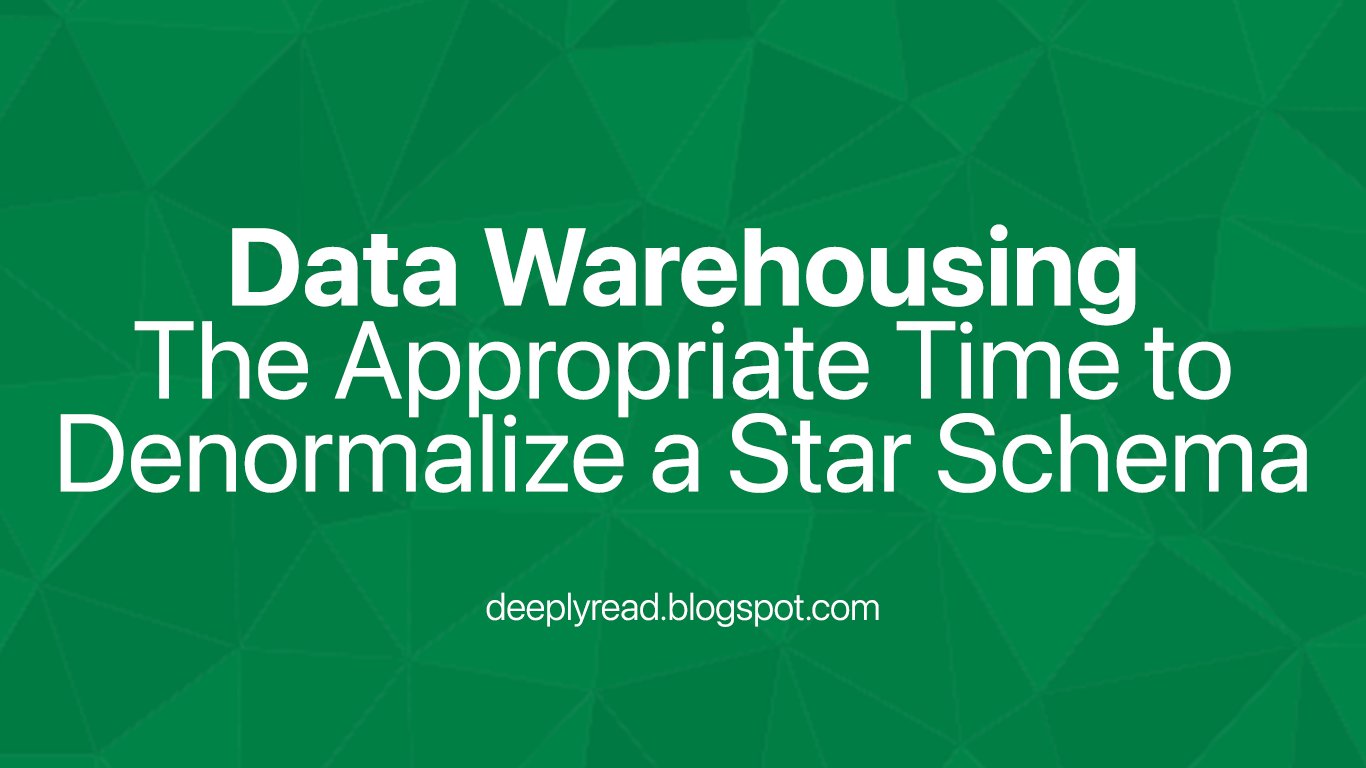In data warehousing, denormalization is the process of intentionally breaking down a normalized data structure into a less normalized form to improve performance. In a star schema, denormalization can be used to improve query performance and simplify the structure of the schema.
But when is it most appropriate to denormalize a star schema? The answer depends on the specific requirements of the data warehousing system, but there are a few general situations where denormalization can be an effective solution.

Improving Query Performance
One of the main reasons to denormalize a star schema is to improve query performance. In a star schema, data is stored in multiple dimension tables, and querying this data can require multiple joins, which can be slow and resource-intensive. By denormalizing the schema, the number of joins can be reduced, resulting in faster query times.
Denormalization can also improve performance by reducing the amount of data that needs to be read from disk. By combining data from multiple dimension tables into a single denormalized table, less data needs to be read, which can significantly improve query performance.
Simplifying the Structure of the Schema
Another reason to denormalize a star schema is to simplify the structure of the schema. A normalized schema can be complex and difficult to understand, especially for non-technical users. By denormalizing the schema, the data can be organized in a way that is easier to understand and navigate.
Denormalization can also make it easier to manage the data. By reducing the number of tables and relationships in the schema, it can be simpler to maintain the data and make changes to the schema as needed.
Balancing Performance and Data Integrity
It's important to note that denormalization can have negative impacts on data integrity. When data is denormalized, it is often duplicated, which can make it more difficult to maintain consistency across the data. Additionally, denormalization can make it harder to implement data validation checks, which can lead to data inconsistencies and errors.
When deciding to denormalize a star schema, it's important to consider both the performance benefits and the potential impacts on data integrity. In most cases, denormalization should be used as a last resort, after other optimization techniques have been exhausted. Before denormalizing, it's a good idea to thoroughly evaluate the potential performance benefits and weigh them against the potential risks to data integrity.
In conclusion, denormalization of a star schema can be a useful technique for improving query performance and simplifying the structure of the schema. However, it's important to carefully consider the potential impacts on data integrity and use denormalization as a last resort after other optimization techniques have been exhausted.